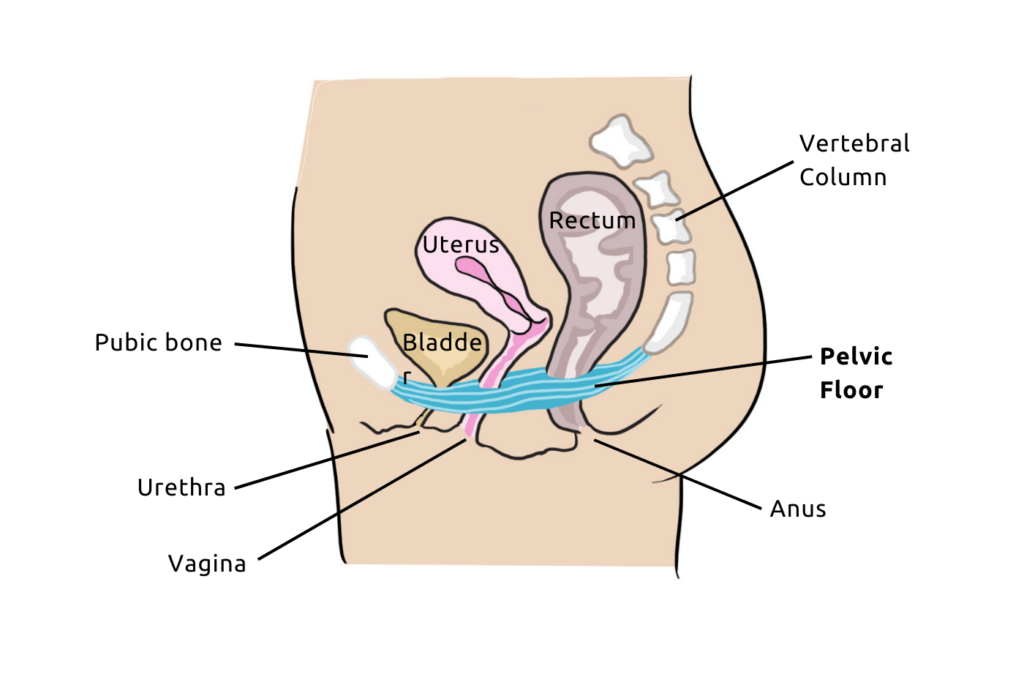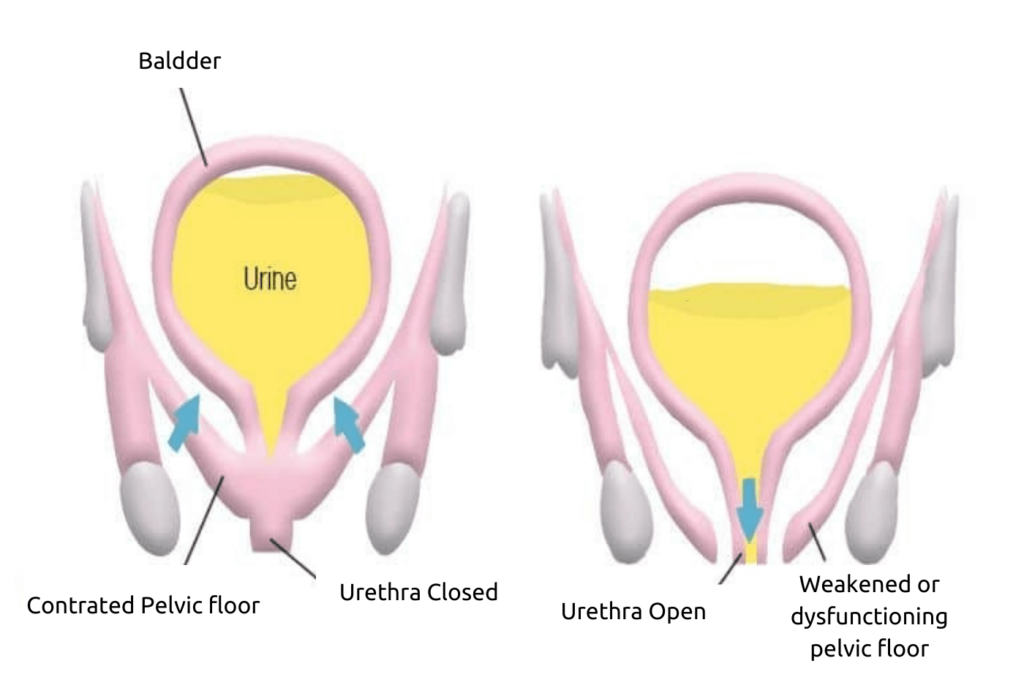
What are the symptoms of Pelvic Floor dysfunction ?
To avoid pelvic floor dysfunction, it is important to strengthen your pelvic floor regularly so that it remains toned. But in some cases, it may become relaxed or weakened.
The main pelvic floor dysfunction symptoms are:
- Involuntary urine or gas leaks
- Lack of sensations during sexual intercourse
- constipation
- Pain or a feeling of heaviness in the lower abdomen
The pelvic floor… A vast subject! This set of muscles found in both women and men helps to support the bladder, the uterus, and the rectum (quite the responsibility!)
You may not have realized it, but the pelvic floor, which extends from the pubis to the rectum, encircles your urethra, vagina, and anus.

It is also responsible for absorbing the pressure exerted daily when you run, jump, cough, laugh. And like other muscles in our body, the pelvic floor is a set of muscles that must be regularly trained to prevent it from relaxing.
Help, my pelvic floor has weakened!
Even though we can’t see our pelvic floor, we sometimes forget that it plays a fundamental role in our lives. Yes, the pelvic floor is responsible for sensuality, sexuality, and elimination. All at the same time!

Symptoms of a pelvic floor dysfunction
Various symptoms can appear with pelvic floor dysfunction. However, according to patients, the symptoms vary and their intensity can vary.
Urinary or Anal Incontinence
A weak or dysfunctioning pelvic floor may cause women to experience urinary or anal disorders:
- Stress Urinary incontinence
- Difficulty holding it in to go to the bathroom.
- Anal incontinence
- gas
- constipation…

As pelvic floor muscles play a role in our capacity to remain continent, when they relax, they can no longer fulfill their physiological role in regulating these processes.

Free Pelvic floor guide
Find out how to strengthen your pelvic floor to prevent bladder weakness and improve intimate pleasure! 💥
Pain in the lower abdomen
In more severe cases, other symptoms may appear if the pelvic floor is too relaxed. Patients often report pain or a feeling of heaviness in the lower abdomen.
This could also be a sign of pelvic organ prolapse, also called prolapse. Depending on the affected organ, prolapse is then devided into 3 types,a cystocele (bladder) or a rectocele (rectum). These are the most common types of organ prolapses but there are others as well.
Since one of the main roles of the pelvic floor is to support the genital organs, when the pelvic floor weakens, the organs are no longer properly supported and can sag and slide downwards. In severe cases, they can even protrude externally.

Absence of sensations during sexual intercourse
The pelvic floor also plays a role in facilitating pleasure sensations. When it is toned and competent, it allows women to have better sensations during sexual intercourse. This includes experiencing more intense orgasms and better natural lubrication.
On of the hallmark symptoms of pelvic floor dysfunction can be the decrease or even an absence of sensations during intimate relations.

What causes Pelvic Floor dysfunction?
Many factors impact the tone of the pelvic floor on a daily basis and throughout our lives. There are, for example, natural factors related to hormones or age. They affect the tone and elasticity of tissues and cause them to weaken.
Other risk factors related to our environment and lifestyle choices also play a role in perineal weakness, such as overweight or smoking.
In other words, all situations that put pressure on the pelvic floor are at risk (sports practice, lifting heavy loads…) and traumatize the pelvic muscles.
In most cases, pelvic floor rehabilitation will be the preferred solution to address problems caused by a weakened perineum.
What to do if my pelvic floor has weakened?

Consult a healthcare professional! They can examine you and guide you towards the most suitable rehabilitation method.
Specialized physiotherapists in pelvic floor rehabilitation or midwives offer rehabilitation sessions in their practices. They will teach you how to effectively contract your pelvic floor to strengthen it.
Once you know how to contract your pelvic muscles, you should continue to regularly train your perineum at home to prevent the symptoms from recurring. There are many solutions for pelvic floor muscle training at home.

One of the methods recommended by healthcare professionals and most effective for muscle strengthening is biofeedback.
This technique allows you to see your activity in real time and to be able to modulate it to improve it. Connected devices such as the French innovation Emy allow you to rehabilitate your pelvic floor using this technology at home!

The device connects to your smartphone and all you have to do is follow the instructions: launch a rocket, throw darts… all thanks to the strength of your pelvic floor! This method allows you to have a real-time feedback of your contractions, directly on the screen, and to track your progress over time.
The fun exercises are based on medical protocols. These are evolving mini-games that adapt to the tone of each woman for personalized training. Let’s see what Taylor has to say about her experience with Emy
Preventative measures for a Healthy Pelvic Floor
One should not wait to see the first signs of pelvic floor weakness before taking action. A healthy pelvic floor starts with prevention!
To avoid becoming a victim of symptoms of a weakened pelvic floor: start by paying attention to everyday actions that strain the pelvic floor. When you cough, sneeze, lift a heavy load… remember to contract your pelvic floor before each effort!

Develop good habits to reduce pressure on your pelvic floor. Remember that a toned pelvic floor will help you avoid urinary leaks, organ prolapse and most importantly… enjoy a fulfilling sex life.

Free Pelvic floor guide
Find out how to strengthen your pelvic floor to prevent bladder weakness and improve intimate pleasure! 💥
If you want to take care of your pelvic floor and learn the right techniques, many tips are available in the free Emy app.




